
Saxtead Green Post Windmill is a Grade II* listed post mill at Saxtead Green, Woodbridge, Suffolk, England which is also a Scheduled monument and has been restored.
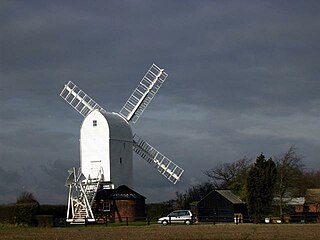
Aythorpe Roding Windmill is a Grade II* listed Post mill at Aythorpe Roding, Essex, England which has been restored to working order.

Ramsey Windmill is a grade II* listed post mill at Ramsey, Essex, England which has been restored.

Gibraltar Mill is a grade II listed Tower mill at Great Bardfield, Essex, England which has been converted to residential use.
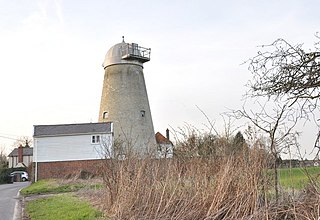
White Roding Windmill is a Grade II listed preserved tower mill at White Roding, Essex, England.
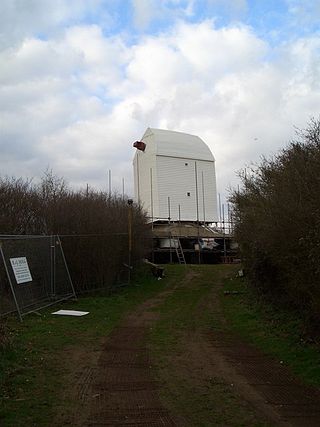
Drinkstone Windmills are a pair of windmills at Drinkstone, Suffolk, England. They consist a post mill and a smock mill. The post mill is Grade I listed and the smock mill is Grade II* listed. The mills were known as Clover's Mills as they were always worked by the Clover family.

Framsden Windmill is a Grade II* listed post mill at Framsden, Suffolk, England which is preserved. The mill was known as Webster's Mill when it was a working mill.
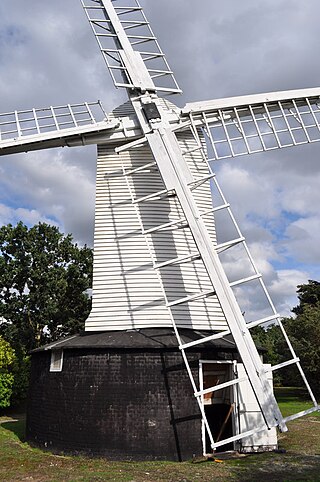
Holton Windmill is a Grade II listed post mill at Holton, Suffolk, England which has been preserved as a landmark.

Upthorpe Mill is a Grade II* listed post mill and scheduled monument at Stanton, Suffolk, England, which has been restored to working order.
Syleham Windmill was a Grade II listed post mill at Syleham, Suffolk, England which was built in 1730 at Wingfield and moved to Syleham in 1823. It was blown down on 16 October 1987. The remains of the mill survive today, comprising the roundhouse and trestle.

Thorpeness Windmill is a Grade II listed post mill at Thorpeness, Suffolk, England which was built in 1803 at Aldringham and moved to Thorpeness in 1923. Originally built as a corn mill, it was converted to a water pumping mill when it was moved to Thorpeness. It pumped water to the House in the Clouds.

Collis Mill is a Grade II* listed smock mill at Great Thurlow, Suffolk, England, which has been restored.

Burgh Mill is a Grade II listed tower mill at Burgh, Suffolk, England. The mill was converted to a residential accommodation in 2005.
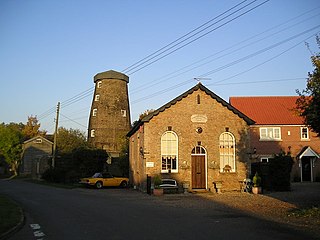
Buxhall Mill is a tower mill at Buxhall, Suffolk, England which has been converted to residential accommodation.
Cockfield Mill is a tower mill at Cockfield, Suffolk, England, which has been converted to residential accommodation.

Gazeley Mill is a tower mill at Gazeley, Suffolk, England which has been converted to residential accommodation.

Skoulding's Mill is a Grade II listed tower mill at Kelsale, Suffolk, England which has been converted to residential accommodation.

Pakenham Mill is a Grade II* listed tower mill at Pakenham, Suffolk, England which has been restored and is maintained in working order.
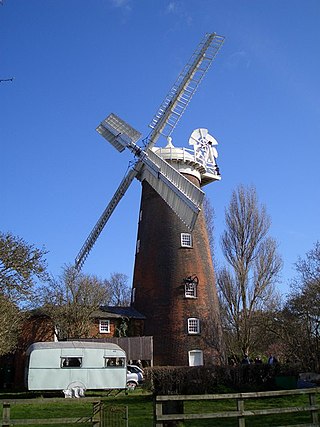
Buttrum's Mill or Trott's Mill is a Grade II* listed tower mill at Woodbridge, Suffolk, England, which has been restored to working order.

Tricker's Mill is a Grade II listed tower mill at Woodbridge, Suffolk, England which has been converted into holiday accommodation.





















